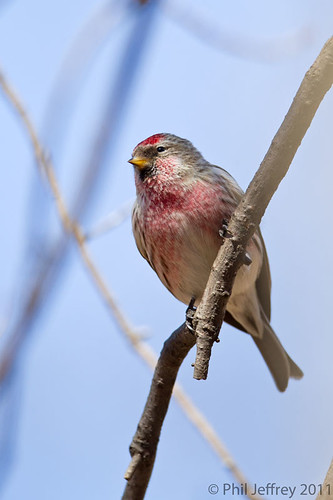
I did a quick coastal run on Christmas Day, in particular to see the breeding plumaged male King Eider at Avalon. Avalon is most of the way down to Cape May (it's actually in Cape May Co) so it turned into a long loop trip.
A quick start at Barnegat Inlet turned up pretty much nothing in the inlet, relatively few Bonaparte's Gulls in the bay, so I decided not to rock hop 500 times to reach the end of the breakwater and headed south to Avalon.
At the 8th Street jetty there was an "Ipswich" Savannah Sparrow, a few close fly-by Gannets (one oiled, sadly), and a couple of loons. Not much to distract from the sea duck flock: Black and Surf Scoters in decent numbers, lots of Common Eiders and one King Eider. The King Eider was really in full-on breeding plumage - search Flickr to get an idea what I mean - although the orange plate at the forehead (base of the bill?) wasn't quite as large as it can get. All the King Eiders I've seen in recent years (2003+) have been the drab females including the two from this year, although my first few - Rhode Island, Montauk in 1999-2001 were all males.
On the way back I took a little spin around Brigantine/Forsythe NWR and saw a totally predictable set of species - raptor numbers down from earlier visits, Pintail numbers subsiding, but the Snow Goose flock was putting on a good show. Birds would feed out in the saltmarsh and then fly across the dike to the pool to bathe, then return to the saltmarsh. There was pretty much a constant stream of Snow Geese in the air. Being Greater Snow Geese there were very few "Blue" Goose color morphs (Lesser Snow Geese have proportionally more), and I didn't see a Ross's despite keeping my eye open for it.








